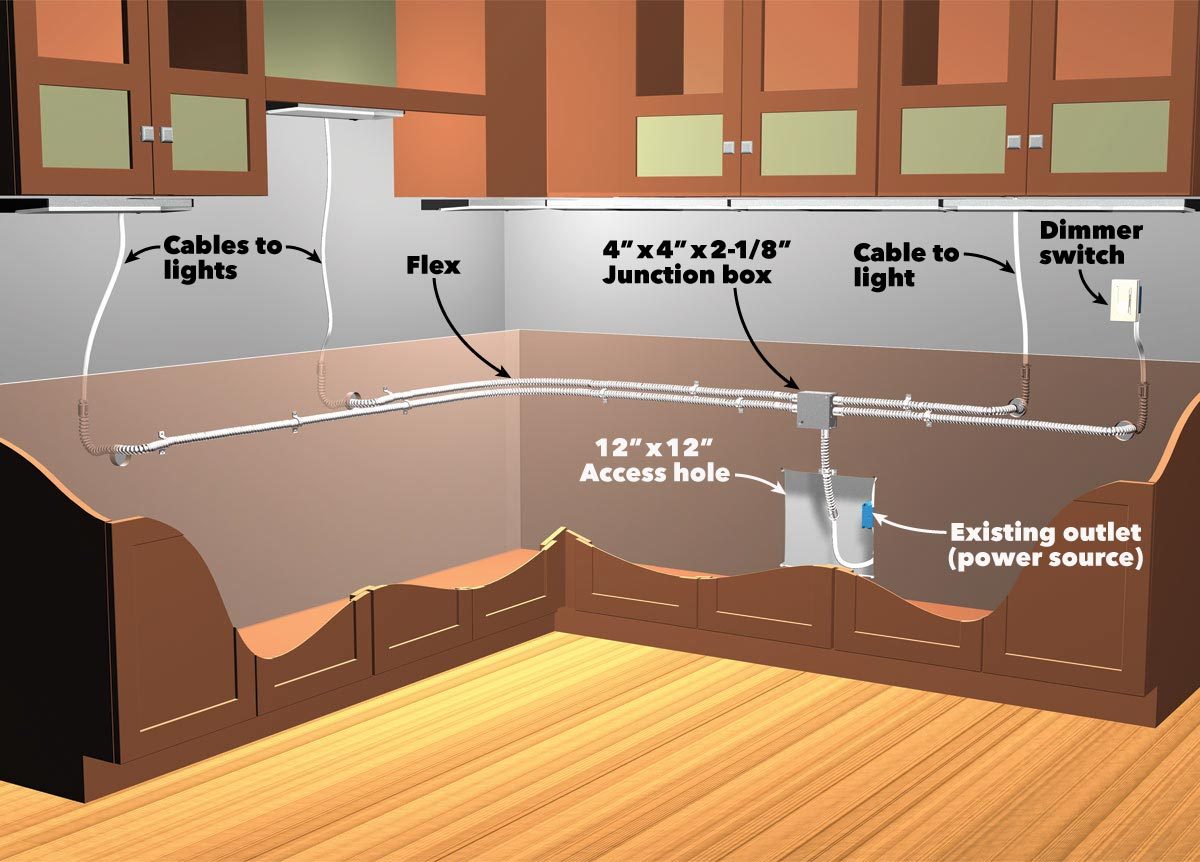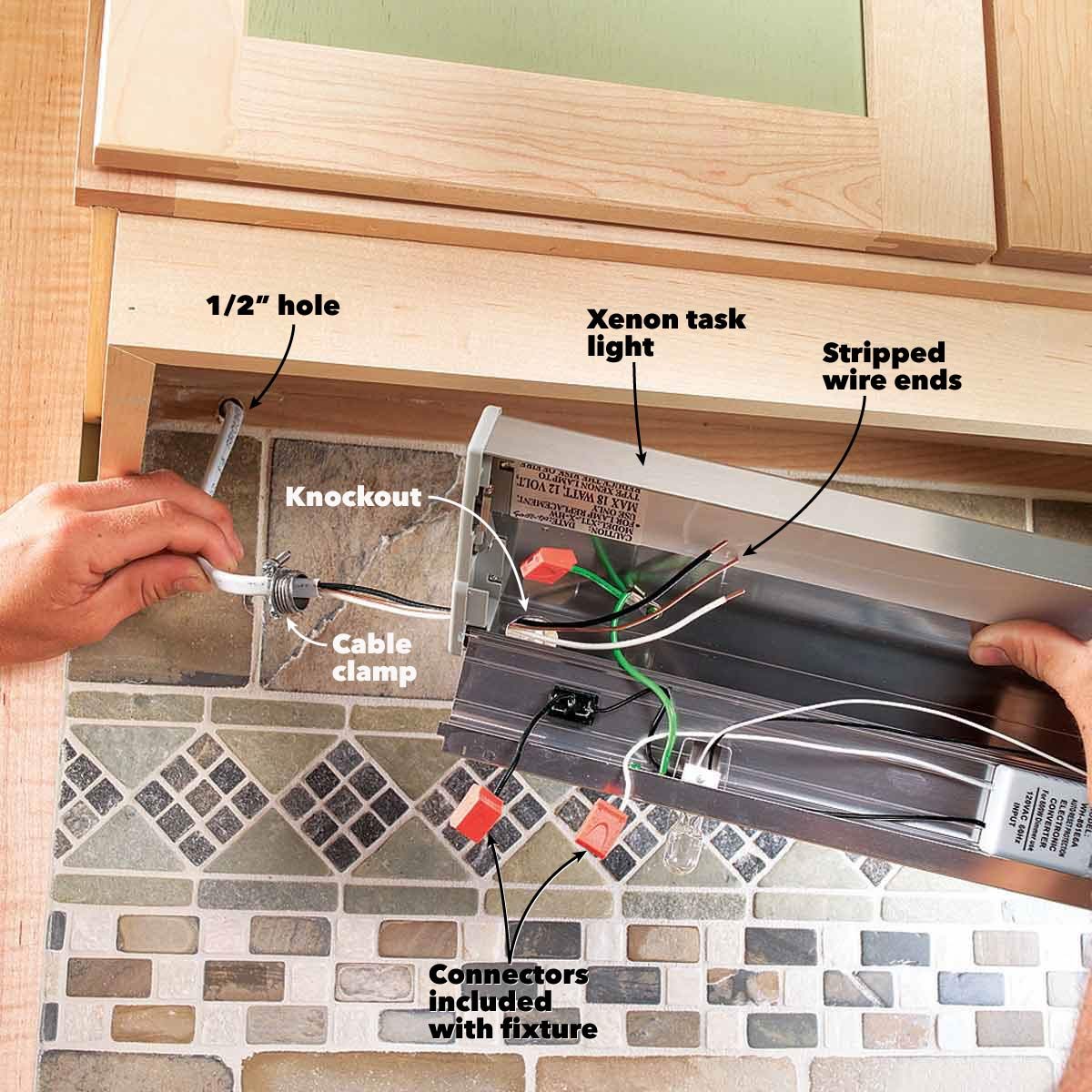Benefits of Growing Under Kitchen Cabinets: Grow Lights Under Kitchen Cabinets

Bringing the beauty and freshness of nature into your kitchen is easier than you think. Growing plants under your kitchen cabinets offers a unique and practical way to enhance your space while enjoying the benefits of fresh herbs and greenery. This setup combines convenience, space-saving solutions, and a touch of natural charm, transforming your kitchen into a vibrant oasis.
Convenience and Space-Saving
Utilizing the often-underutilized space under kitchen cabinets offers numerous advantages. This setup provides a convenient and readily accessible location for your plants, eliminating the need for separate gardening areas or windowsills. This is particularly beneficial for busy individuals or those with limited space.
- Easy Access: Plants are within reach, making it simple to tend to them, harvest herbs, or simply enjoy their presence. This accessibility encourages regular care and promotes a sense of connection with your plants.
- Minimal Space Requirements: This setup makes the most of vertical space, ideal for kitchens with limited counter or floor area. This allows you to grow a variety of plants without sacrificing valuable kitchen space.
- Integrated Aesthetics: The plants under the cabinets seamlessly blend into your kitchen’s decor, creating a natural and inviting ambiance. This approach adds a touch of greenery and life to your kitchen without compromising its overall style.
Challenges and Limitations
While growing plants under kitchen cabinets offers numerous advantages, it’s important to be aware of potential challenges. Understanding these limitations can help you make informed decisions and adjust your approach for successful plant growth.
- Limited Light Exposure: The space under cabinets may receive less natural light compared to other locations. This can limit the types of plants you can grow and require supplementary lighting to ensure proper growth.
- Moisture Control: The kitchen environment can be humid, leading to increased moisture levels under cabinets. This can create conditions favorable for mold or mildew growth, requiring careful monitoring and ventilation.
- Space Constraints: The space under cabinets can be limited, restricting the size and number of plants you can grow. This may require careful planning and selection of compact plant varieties.
Choosing the Right Grow Lights

The heart of your kitchen garden success lies in selecting the right grow lights. Just as different plants thrive in varying sunlight conditions outdoors, the same principle applies indoors. Understanding the spectrum and intensity requirements of your chosen plants will guide you towards the ideal grow light for your kitchen cabinet setup.
Types of Grow Lights
Different types of grow lights cater to specific needs, each with its advantages and drawbacks. Here’s a breakdown of common types:
- LED Grow Lights: Known for their energy efficiency, longevity, and ability to emit specific wavelengths of light. They are also relatively cool, reducing the risk of overheating your plants. LED grow lights come in various configurations, including strips, panels, and bulbs, making them adaptable to kitchen cabinet installations.
- Fluorescent Grow Lights: While not as energy-efficient as LEDs, fluorescent lights are still a viable option, offering a broader spectrum of light than traditional incandescent bulbs. They are often available in compact sizes, making them suitable for smaller cabinets.
- High-Intensity Discharge (HID) Grow Lights: These lights produce a high intensity of light, ideal for larger-scale indoor gardening. However, they are less energy-efficient than LEDs and require specialized fixtures and cooling systems, making them less practical for typical kitchen cabinet setups.
Spectrum and Intensity Requirements
The spectrum and intensity of light play crucial roles in plant growth.
- Spectrum: Plants utilize specific wavelengths of light for photosynthesis and other essential functions. For instance, blue light promotes vegetative growth (leaves and stems), while red light encourages flowering and fruiting. Full-spectrum grow lights offer a balanced combination of wavelengths, suitable for a wide range of plants.
- Intensity: The intensity of light, measured in micromoles per square meter per second (µmol/m2/s), determines the amount of light energy plants receive. Different plants have varying intensity needs. For example, leafy greens generally require lower intensity compared to flowering plants.
Selecting Grow Lights Based on Plant Type and Cabinet Space
Consider the following factors when choosing grow lights:
- Plant Type: The specific light requirements of your chosen plants are paramount. Research the ideal spectrum and intensity for optimal growth. For instance, leafy greens like lettuce and spinach thrive under full-spectrum lights with moderate intensity, while flowering plants like tomatoes and peppers require higher intensity and a greater proportion of red light.
- Cabinet Space: The size of your kitchen cabinet will dictate the type and configuration of grow lights you can accommodate. Smaller cabinets may be suitable for LED strips or compact fluorescent bulbs, while larger cabinets can accommodate larger LED panels or multiple fixtures.
- Budget: LED grow lights are generally more expensive upfront but offer long-term savings due to their energy efficiency. Fluorescent lights provide a more budget-friendly option, while HID lights are typically the most expensive.
Setting Up Your Kitchen Cabinet Garden

Now that you’ve chosen your grow lights and have a good understanding of the benefits of growing under your kitchen cabinets, it’s time to start planning the layout of your garden. This involves considering the placement of your plants and how to configure your lights for optimal growth.
Designing a Layout
The layout of your kitchen cabinet garden is crucial for ensuring that all your plants receive adequate light and have enough space to grow. Here are some tips for designing a layout that maximizes space and optimizes light distribution:
- Vertical Placement: Utilize the vertical space within your cabinet by placing plants in tiers. For example, you could place taller plants on the top shelf and shorter plants on the lower shelves.
- Staggering Plants: To ensure all plants receive adequate light, stagger them so that they are not directly behind one another. This allows light to penetrate deeper into the cabinet and reach all plants.
- Light Placement: Position your grow lights strategically to ensure even coverage. If you’re using a single light, consider placing it in the center of the cabinet, facing downward. If you’re using multiple lights, spread them out evenly across the top of the cabinet.
Maximizing Space and Airflow, Grow lights under kitchen cabinets
- Use Shelves and Trays: Utilize shelves and trays to maximize space and create a more organized layout. You can also use tiered shelves to create vertical layers, allowing you to grow more plants in a limited space.
- Vertical Garden Systems: Consider using a vertical garden system, which can be hung from the ceiling or mounted on the wall, to make use of vertical space. These systems often include built-in lighting and watering features, making them convenient and space-saving options.
- Airflow: Proper airflow is essential for healthy plant growth. Ensure your cabinet has adequate ventilation to prevent mold and mildew from forming. You can achieve this by leaving a small gap at the top or bottom of the cabinet door. Alternatively, you could use a small fan to circulate air inside the cabinet.
Ventilation and Temperature Control
- Ventilation: Adequate ventilation is crucial for maintaining a healthy growing environment. Without proper ventilation, humidity can build up inside the cabinet, leading to fungal diseases and stunted growth. Make sure your cabinet has sufficient ventilation, either through natural airflow or by using a small fan.
- Temperature Control: Most plants thrive in temperatures between 65-75 degrees Fahrenheit (18-24 degrees Celsius). Monitor the temperature inside your cabinet and make adjustments as needed. You can use a small heater or fan to regulate the temperature. If you live in a climate with extreme temperatures, you may need to use a thermostatically controlled heater or fan to maintain optimal conditions.
While grow lights under kitchen cabinets can be a fun way to experiment with herbs or small plants, you might find that a more practical solution is a dedicated under-cabinet lighting system. The adorne under cabinet lighting system provides bright, even illumination for your countertops and workspaces, making food prep and cleaning a breeze.
If you’re looking for a way to brighten up your kitchen without sacrificing valuable counter space, this system might be the perfect fit for you.
While grow lights under kitchen cabinets can be a great way to add some greenery to your space, they can also be quite bulky and require a dedicated power source. If you’re looking for a more discreet and convenient lighting solution, consider using battery operated stick on under cabinet lights.
These lights are easy to install, require no wiring, and can be used to highlight your countertop or create a cozy ambiance. You can even use them to supplement the light from your grow lights, allowing you to better monitor your plants’ progress.